THE HANSA TOWNS
- The Dawn of a Great Trade Guild
- Federation
- Foreign Trade
In bringing before the public what I believe to be the first History of the Hanseatic League, it gives me pleasure to think that the impetus to write it came from the United States. The work was suggested to me by my valued friend, Mr. G. H. Putnam, of New York, a citizen of the country in which the principle of federation is best understood and most thoroughly carried out. The Hansa was one of the earliest representatives of that federal spirit which will, beyond doubt, some day help to solve many of the heavy and grievous problems with which we of the Old World are struggling; but that day is not yet, and meantime we have much to learn both from the successes and failures of the past.
I have, of course, assumed in my readers some knowledge of German History, such as they can derive from Professor Bryce's inimitable "Holy Roman Empire," or from Baring-Gould's "Story of Germany," one of the earlier volumes of this series.
In conclusion, I desire to express my very cordial thanks to Dr. Otto Benecke, Keeper of the State Archives of the city of Hamburg, and to my uncle, Dr. Carl Leo, Syndic of the same town, for the generosity with which they have accorded me valuable assistance in the preparation of this volume. I have further to thank Miss L. Toulmin Smith for help in revision of the MS., and for many useful suggestions. To my sister. Miss Alice Zimmern, and to Dr. Richard Garnett, of the British Museum, I am indebted for aid in proofreading.
HELEN ZIMMERN. Florence,
Marck I, 1889.
CONTENTS.
Preface
Proem
PERIOD I.
I. The Dawn of a Great Trade Guild
Teutonic Merchants, — Travelling in Early Times, — Origin of the Guilds
II. Federation
The Story of "Winetha," — The Island of Gothland, — "Salt Kolberg," — Unhansing.
III. Foreign Trade
Social Conditions, — Enslavement of the Middle Class, — Italian Influences, — Burgher Home Rule, — League of the Baltic Towns, — The Title "Hansa,".
IV. The Hansa Fights
The Herring Fisheries, — Waldemar, — The First Attack, — Sack of Wisby, — Copenhagen Plundered, — Punishment of Wittenborg, — The Cologne Federation, — Growing Strength of the League, — Flight of Waldemar, — Treaty of Stralsund, — A Curious Chapter in History,
PERIOD II.
THE HISTORY OF THE HANSEATIC LEAGUE, FROM 1370 TO THE PUBLIC PEACE OF 1495, DECREED IN GERMANY BY MAXIMILIAN I.
I. Lübeck Receives an Imperial Visitor
Hesitation of Lübeck, — Procession from St. Gertrude's Chapel, — Lübeck Hospitality, — Records of the Visit.
II. The Towns in the Fourteenth Century
The Ban of the Hansa, — Submission of Brunswick, — Prominence of the Cities, — Population of Lübeck, — Characteristics of the Germans, — Independence of the Towns, — The Maritime Ports, — Exports of the Plansa, — Conditions of Trade, — Specie, Credit, and Bills, — The Extent of Mediaeval Trade, — The Churches and Religious Buildings, — Hanseatic Architecture and Art, — Science and Literature, — The May Emperor, — Customs, Restrictions, and Regulations, — Luxury in Dress, — The Town Council, — The Town-hall, — Mediaeval Patriotism.
III. The Victual Brothers
Plunder of Bergen, — Störtebeker, — Simon of Utrecht, — Execution of Störtebeker,
IV. The Factory of Bergen
History of Bergen, — Shoemaker's Alley, — Constitution of the Factory, — Barbarous Practices.
V. The Hanseatic Commerce with Denmark, Sweden, and Russia
Skanoe and Falsterbo, — The Pious Brotherhood of Malmo, — The Hansa at Novgorod, — The Court of St. Peter, — Furs, Metals, Honey, and Wax, — The Lombards versus the Hansa, — Ivan the Terrible Sacks Novgorod.
VI. The Commerce of the League with the Netherlands and Southern Europe
The Flemish Trade Guilds, — Hansa Factory at Bruges, — Suspension of Trade with Flanders, — Trade with Antwerp, — Relations with France, — The Hansa in Portugal and Italy, — Italian Culture in South Germany.
VII. The Steelyard in London
The Hanseatic Rothschilds, — Hanseatics Hated by the People, — Rupture with England, — The Key to the City's Commerce, — Description of the Steelyard, — Inner Life of the Factory, — The English Conciliated, — Depots throughout England, — The Hansa's Part in Ceremonies, — Religion of the English Hanseatics.
VIII. The Organization of the Hanseatic League
The Diets, — Minutes of the Diet's Proceedings.
PERIOD III.
THE DECLINE AND FALL OF THE HANSA.
Introduction
Decay of the Feudal System, — The Thirty Years' War.
I. Storm Clouds
Charles V. of Germany, — Gustavus Appeals to Lübeck, — Cruelty of Christian II., — Gustavus Lands in Sweden, — Lübeck Aids Gvistavus, — Christian II, deposed, — Christian II. Abjures Lutheranism, — Christian's Memory.
II. King Frederick and King Gustavus Vasa
"Put not thy trust in Princes," — Gustavus Quarrels with Lübeck.
III. Wullenweber
The Religious Movement, — Lübeck Espouses Lutheranism, — Max Meyer, — Capture of Spanish Ships, — Christopher of Oldenburg, — Congress at Hamburg, — Wullenweber's Projects, — Disorder in Lübeck, — Hostilities in Denmark, — Escape of Max Meyer — Battle of Assens, — Cologne's Reproach, — Nicholas Bromse, — Resignation of Wullenweber, — Imprisonment of Wullenweber, — The Rack, — Unfair Trial, — Execution of Wullenweber.
IV. The Hansa Loses its Colonies
Emancipation of Sweden, — New Route to Russia, — History of Livonia, — Livonia Repudiates the Hansa, — Ivan Seizes Livonia, — Stupefaction of Germany, — War Against Sweden, — Warning of the Duke of Alva, — Bornholm Ceded to Denmark, — Embassy to the Muscovite Court, — The League Dissolves.
V. The League in the Netherlands
Causes of Failure in the West, — Dissension Among the Towns, — Depot Established at Antwerp, — Dangerous Innovations, — General Insecurity of Commerce, — Insubordination of the Hanseatics, — The Antwerp Factory in Danger, — Trade with the Low Countries.
VI. The End of the Hansa's Dominion in England
Restrictions on the English Trade, — Complaints of the Londoners, — Trade Regulations Broken, — Queen Mary Favours the Hansa, — English Grievances, — Negotiations with Elizabeth, — Internal Disunion, — The Steelyard Insubordinate, — Hamburg Adjusts its Policy, — The Good Old Privileges, — Conservative Lübeck, — Seizure of Hanseatic Vessels, — Expulsion of Hanseatics from England, — The Steelyard Property,
VII. The Thirty Years' War Kills the League
Gustavus Adolphus, — Wallenstein's Project, — Imperial Graciousness, — The War Storm Breaks.
VIII. The Survivors
"Sic transit gloria mundi," — Napoleon and the Three Cities, — Note.
Epilogue
Index
LIST OF ILLUSTRATIONS.
VIEW OF HAMBURG
IMPERIAL CROWN OF GERMANY
COIN OF CHARLEMAGNE
PIRATES
NORMAN VESSEL FROM BAYEUX TAPESTRY
HIGHROAD
ITINERANT MERCHANTS
SALTERS' HALL, FRANKFORT
MEDIAEVAL CITY
ROBBER KNIGHTS
RATH-HAUS, COLOGNE
RATH-HAUS, TANGERMÜNDE
SHIPPING HOUSE, LUBECK
GROCERS' HALL, BREMEN
RATH-HAUS, BRUNSWICK
MÜHLENTHOR, STARGARD
BURGHERS AT TABLE
GERMAN TRADE LIFE
RENSLAU GATE
CROSS-BOW
HOHE-THOR, DANZIG
HOLSTENTOR, LÜBECK
CHILDREN’S SPORTS
DOMESTIC MUSIK
MIDDLE CLASS OCCUPATIONS IN THE FIFTEENT CENTURY
SHIPBUILDING IN THE FOURTEENTH CENTURY
HELIGOLAND
TOMB OF SIMON OF UTRECHT, HAMBURG
JUSTICE IN THE FIFTEENTH CENTURY
SHIP AT THE END OF THE FIFTEENTH CENTURY
SEAL OF NOVGOROD
STADT-HAUS, BRUGES
RHINE BOAT, COLOGNE
THE PIED PIPER’S HOUSE, HAMELIN
FONDAGO DEI TEDESCHI, VENICE
THE STEELYARD, LONDON
BARDI PALACE, FLORENCE
STEELYARD WHARF, LONDON
THE TRIUMPH OF RICHES, BY HOLBEIN
SEAL OF LÜBECK
PETERSEN-HAUS, NUREMBURG
CHARLES V.
CHRISTIAN II.
HENRY VIII.
SCENE BEFORE A JUDGE
THE RACK
THE HANSA FACTORY, ANTWERP
SIR THOMAS GRESHAM
RATH-HAUS, MÜNSTER
RATH-HAUS, LÜBECK
RATH-HAUS, BREMEN
[Of the architectural views reproduced in this volume some have been copied from prints in the British Museum, others from drawings and photographs in possession of the authoress, and the remainder from various German authorities. The illustrations of German life and manners are taken from Otto Henne am Rhyn's "Cultur Geschichte des deutschen Volkes," to the publisher of which volume our best thanks are due.]
STORY OF THE HANSA TOWNS.
PROEM.
There is scarcely a more remarkable chapter in history than that which deals with the trading alliance or association known as the Hanseatic League. The League has long since passed away, having served its time and fulfilled its purpose. The needs and circumstances of mankind have changed, and new methods and new instruments have been devised for carrying on the commerce of the world. Yet, if the League has disappeared, the beneficial results of its action survive to Europe, though they have become so completely a part of our daily life that we accept them as matters of course, and do not stop to inquire into their origin. To us moderns it seems but natural that there should be security of intercourse between civilized nations, that highways should be free from robbers, and the ocean from pirates. The mere notion of a different state of things appears strange to us, and yet things were very different not so many hundred years ago.
In the feudal times the conditions of life on the continent of Europe seem little short of barbarous. The lands were owned not only by the kings who ruled them with an iron despotism, but were possessed besides by innumerable petty lordlings and princelets, who on their part again exercised a rule so severe and extortionate that the poor people who groaned under it were in a condition little removed from slavery. Nay, they were often not even treated with the consideration that men give their slaves, upon whom, as their absolute goods and chattels, they set a certain value. And it was difficult for the people to revolt and assert themselves, for however disunited might be their various lords, in case of a danger that threatened their universal power, they became friends closer than brothers, and would aid each other faithfully in keeping down the common folk. Hand in hand with princes and lords went the priests, themselves often worldly potentates as well as spiritual rulers, and hence the very religion of the carpenter's son, which had overspread the civilized world in order to emancipate the people and make men of all nations and degrees into one brotherhood, was — not for the first time in its history — turned from its appointed course and used as an instrument of coercion and repression.
Such briefly was the celebrated feudal system — a system whose initial idea that the rich man should protect the poor, that the lord should be as a father to his vassals, is wise and good, but which in practice proved itself untenable. Even to-day, after many centuries and generations, the only European nations that have wholly succeeded in casting off the feudal yoke are those in whose history an entirely subversive revolution, like the French, has taken place. In others, notwithstanding years of struggle and revolt, not only its memory, but some of its customs, still survive; for systems and institutions die hard, and Continue to exercise mischievous power long after their original force is spent. To this survival can be traced a large number of the evils that are agitating contemporary Europe; for example, the wretched state of Ireland.
That the people of Germany, the country with which we have chiefly to deal in treating of the Hanseatic League, was not wholly enslaved and crushed out of all individual existence by the state of things that reigned from the Baltic to the Alps in the early years of its history is due to the two great factors of memory and heredity. Memory, because when Tacitus, that most dramatic of historians, wrote his famous book on Germany, one of the chief points he noted in this land was that there existed an equality among the freeborn, an absence of rank and concentration of power. Heredity, because a love of individual freedom appears as an inherent quality in the Teutonic race from their first appearance in historic legend.
"Though the mills of God grind slowly
Yet they grind exceeding small,"
sings the poet, and all the ages have confirmed the experience that might is not suffered to be right for ever, that vengeance falls and justice asserts itself, even though the wrong be not righted, or the evil avenged for many a long year after the sin has been committed.
"Whom the gods would destroy they first strike with madness," says the Latin proverb. It was so with the ambitious rulers of Germany. They were not content to be sovereigns of their own empire, they desired also to hold in their hand the reins of Italy; the bestowal of the title Holy Roman Emperor by the Pope Leo III. upon Charlemagne moved their longing and cupidity, so that gradually they grew more occupied with the business of the fair peninsula, "the garden of the Empire," as Dante calls it, than with the condition of their own ruder and sterner fatherland. Added to this they took to fighting among themselves, being divided into two rival factions which elected opposing rulers, the result being that often no one knew who was head or who was subject.
Frederick Barbarossa was the last to uphold the real authority and power of Germany. He was a true hero of romance, one of the noblest expressions of the mediaeval character. When he died the real empire fell. What remained was but a semblance and a ruin, and it is little wonder that Germany plunged henceforth into yet greater anarchy, invented the legend that peace and prosperity would not return to her until Frederick Red Beard should come back to rule, that giant among men, falsely reported dead, but who, in truth, was merely resting, sunk in enchanted sleep among the mountains of Bavaria. There he was waiting the hour when the ravens should cease to hover around the cloud-capped peak to emerge surrounded by the trusty Crusaders who shared his slumbers and restore to Germany the golden age of peace and strength.
It is claimed by some that Barbarossa has so returned, that he came back as recently as 1870, but whether this be fact or no does not concern us here. What does concern us is, that in the reign of Frederick Barbarossa we find mentioned, for the first time as a power in the State, a few of the many German cities that had arisen under the fostering protection of Henry the Fowler. Barbarossa found it useful to encourage the growth of that third estate so needful to the healthy existence of the body politic. Thus he could pit them against the nobles when it pleased him to harass his sometime allies; he could also draw from them the moneys that are the sinews of war. In return for such loyal aid the emperor freely granted municipal institutions, rights and privileges, exemptions and favours, little realizing that in so doing he was creating in his own land that very spirit of independence, that breath of modern individual freedom, to quench which he was spending his best years and strength beyond the barrier Alps.
The policy therefore of the "imperial knights" and "knightly emperors" who preceded and followed Frederick, while in one way it tended to destroy the unity of Germany as a political state, in the other was the means by which the cities of Germany, as well as those of Northern Italy, acquired that remarkable independence, that rapid, splendid commercial and intellectual development that raised them to the condition of almost autonomous communities, and made them the wonder, glory, and pride of the Middle Ages. Citizens and burghers became freemen, and enjoyed the privileges that fell to this lot. Hence men loved to crowd into the towns, and these grew up and flourished apace, until they acquired such power and assumed such proportions as their first promoters little contemplated.
It was the Lombard league of cities that broke the might of the Holy Roman Emperors, as the rulers of Germany loved to style themselves, as they styled themselves, indeed, long after the Empire, to quote Voltaire, was neither Holy, nor Roman, nor an Empire.
Ignominiously driven forth from Italy, the German kings at last turned their steps homeward, where they looked to reign with their old strength and might, even though the range of their rule had been circumscribed. They came back to find that long absences, internal and external feuds, pretenders and usurpers, had so weakened their prestige that their subjects had learnt to trust to themselves rather than to their sovereign heads. And when they did return, at last, it was to find themselves confronted with such another league of cities, as had wrecked their power abroad, a federation founded for mutual protection and defence, under whose aegis alone could peace or shelter be found.
This was the irony of fate indeed. To be sovereigns of the world, the German emperors had staked their national existence; staked and lost.
On a murky and disturbed horizon had arisen a brilliant star, the star of municipal liberty, helping men to hope for and aspire towards those better things, to which it alone could lead them. The political anarchy of Germany, increased by forty years' interregnum, not only had given birth but strength to the confederation of cities directed against the brigandage of the princes and nobles, which we first meet with under the name of Hansa, in the year 1241, at a time when both the Papal and Imperial thrones were vacant, when in France St. Louis wielded the sceptre and was strengthening the power of nobles and the church; when in England Henry III. had enraged the barons by his fondness for foreign favourites, and when that outburst was preparing which led to the formation of a popular faction and upraised the patriot, Simon de Montfort; a time, in short, when the long struggle even now waging between the people and their rulers was first begun in modern Europe.
COIN OF CHARLEMAGNE
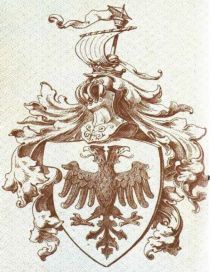
Hansewappen
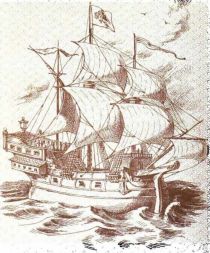
Hanse Kogge
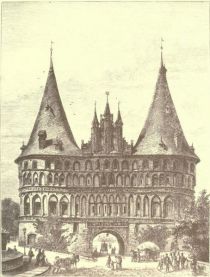
Lübeck Das Holstentor

Braunschweig Stadtansicht
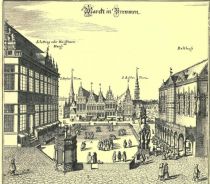
Bremen Marktplatz
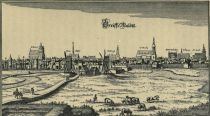
Greifswald Stadtansicht
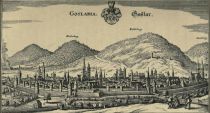
Goslar Stadtansicht
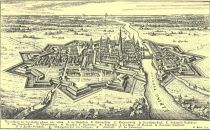
Elbing Stadtansicht
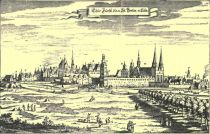
Berlin und Kölln
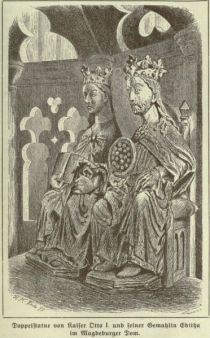
Kaiser Otto I. und Gemahlin
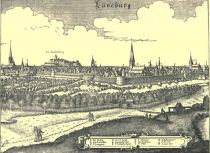
Lüneburg Stadtansicht

Magdeburg Stadtansicht
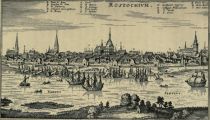
Rostock Stadtansicht
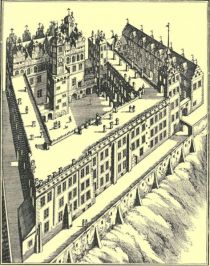
Stettin, das Alte Schloss
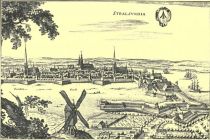
Stralsund Stadtansicht
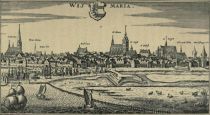
Wismar, Stadtansicht
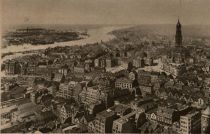
Hamburg, Blick auf die Unterelbe
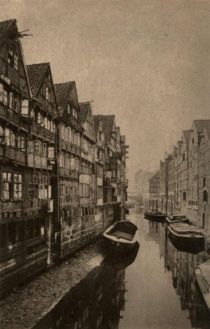
Hamburg, Flet in der Altstadt
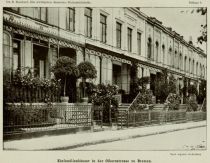
Bremen - Einfamilienhäuser in der Olbersstraße
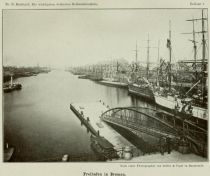
Bremen - Freihafen
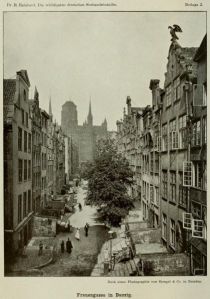
Danzig - Frauengasse
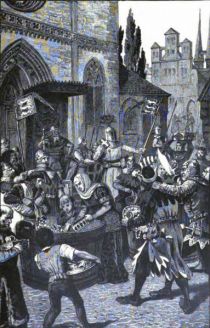
Die Plünderung Wisbys
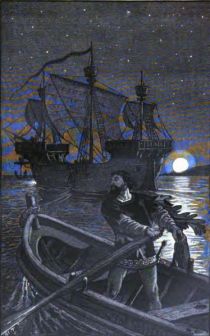
Flucht an Bord einer Kogge
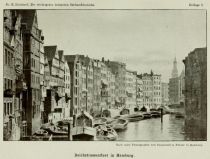
Hamburg - Deichstraßenfleet
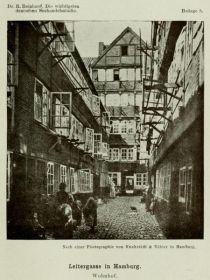
Hamburg - Leitergasse
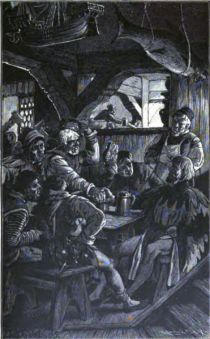
Wirtshausszene in der Hansezeit

Ulm 1493

Ulm 1643
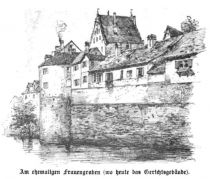
Ulm, am ehemaligen Frauengraben

Ulm, Die alte Bauenmühle

Ulm im 16. Jahrhundert
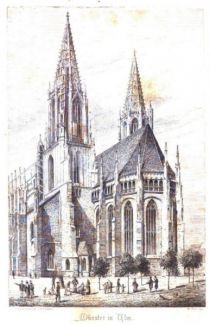
Ulm, Münster
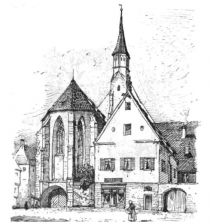
Ulm, Münsterplatz
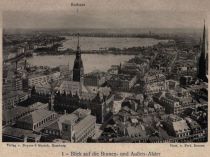
Hamburg 001 Blick auf die Binnen- und Außen-Alster
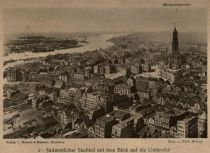
Hamburg 002 Südwestlicher Stadtteil mit dem Blick auf die Unterelbe
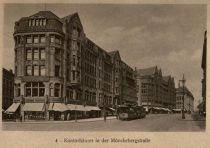
Hamburg 004 Kontorhäuser in der Mönckebergstraße
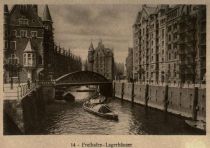
Hamburg 014 Freihafen-Lagerhäuser
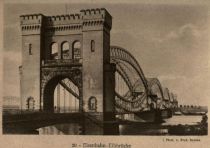
Hamburg 020 Eisenbahn-Elbbrücke
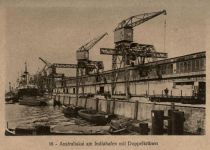
Hamburg 016 Australiakai am Indiahafen mit Doppelkränen
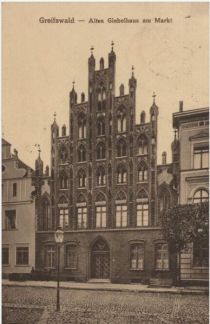
Greifswald, Giebelhaus am Markt
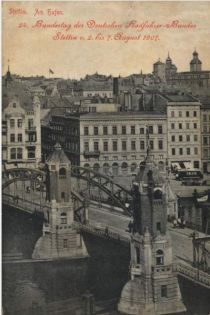
Stettin, am Hafen
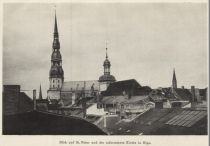
000 Blick auf St. Peter und die reformierte Kirche in Riga
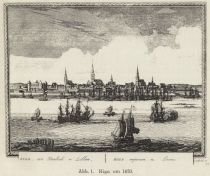
001 Riga um 1650
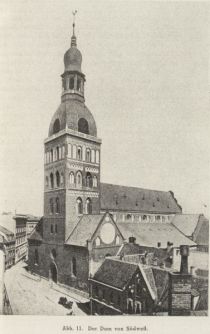
011 Riga, Der Dom von Südwest